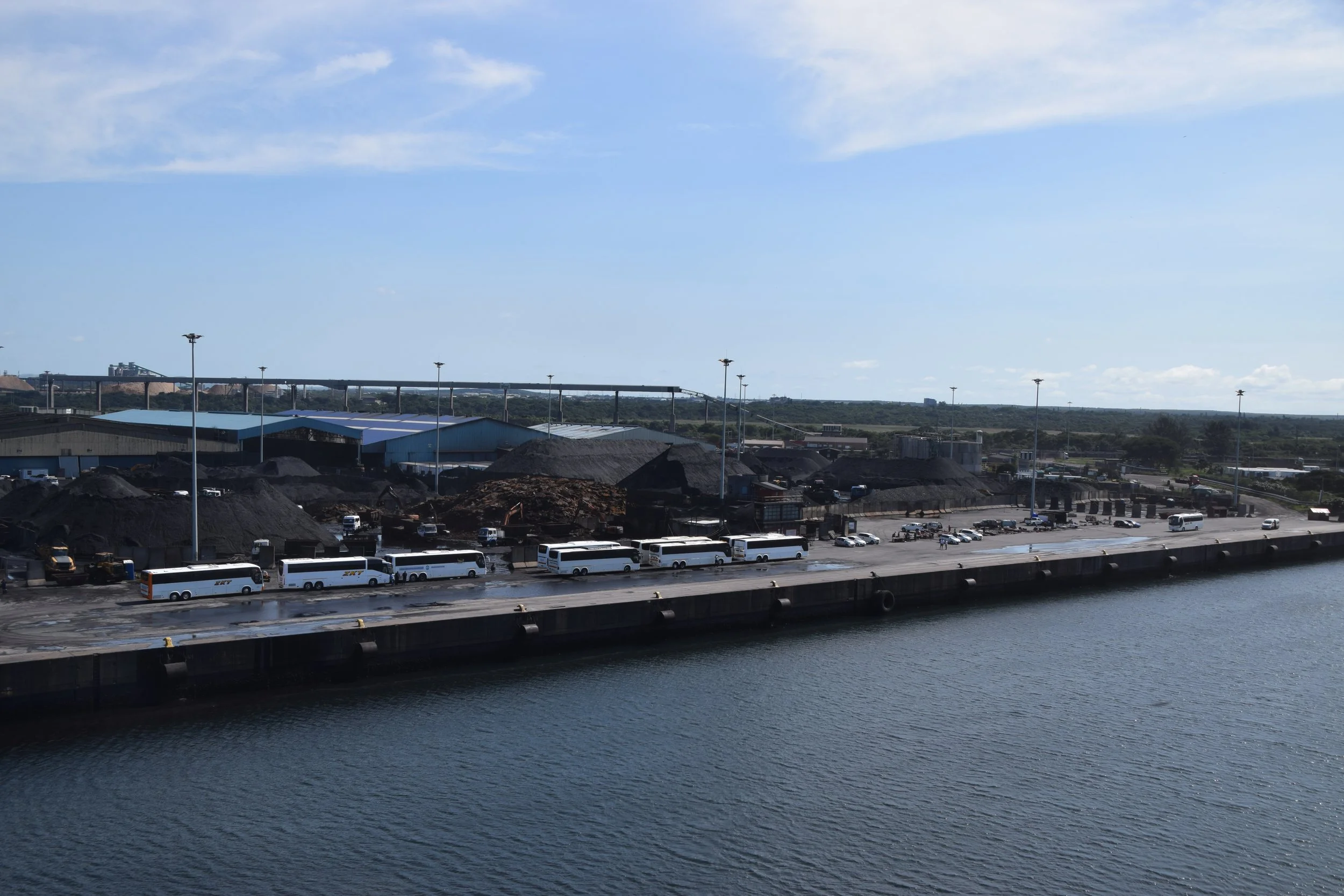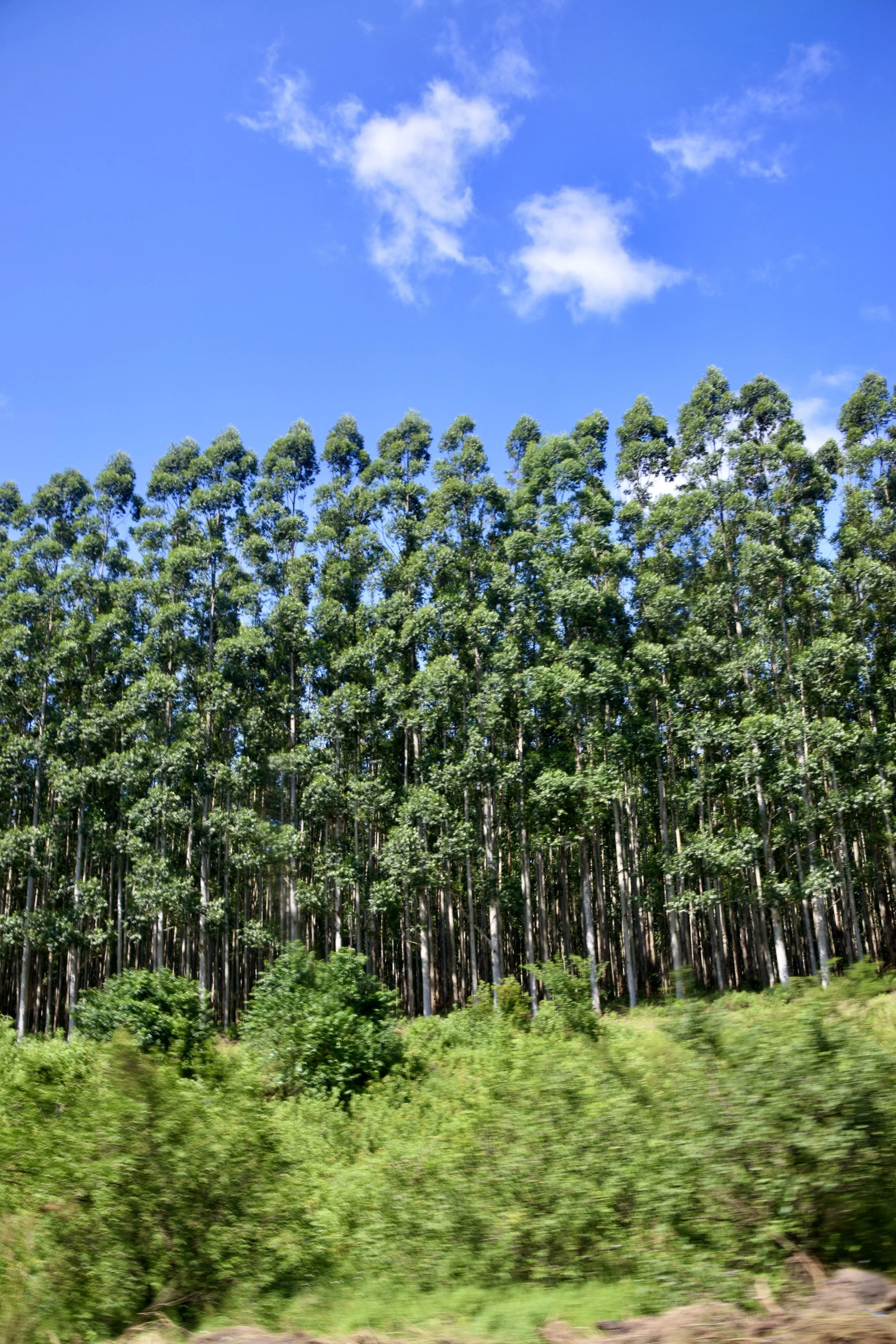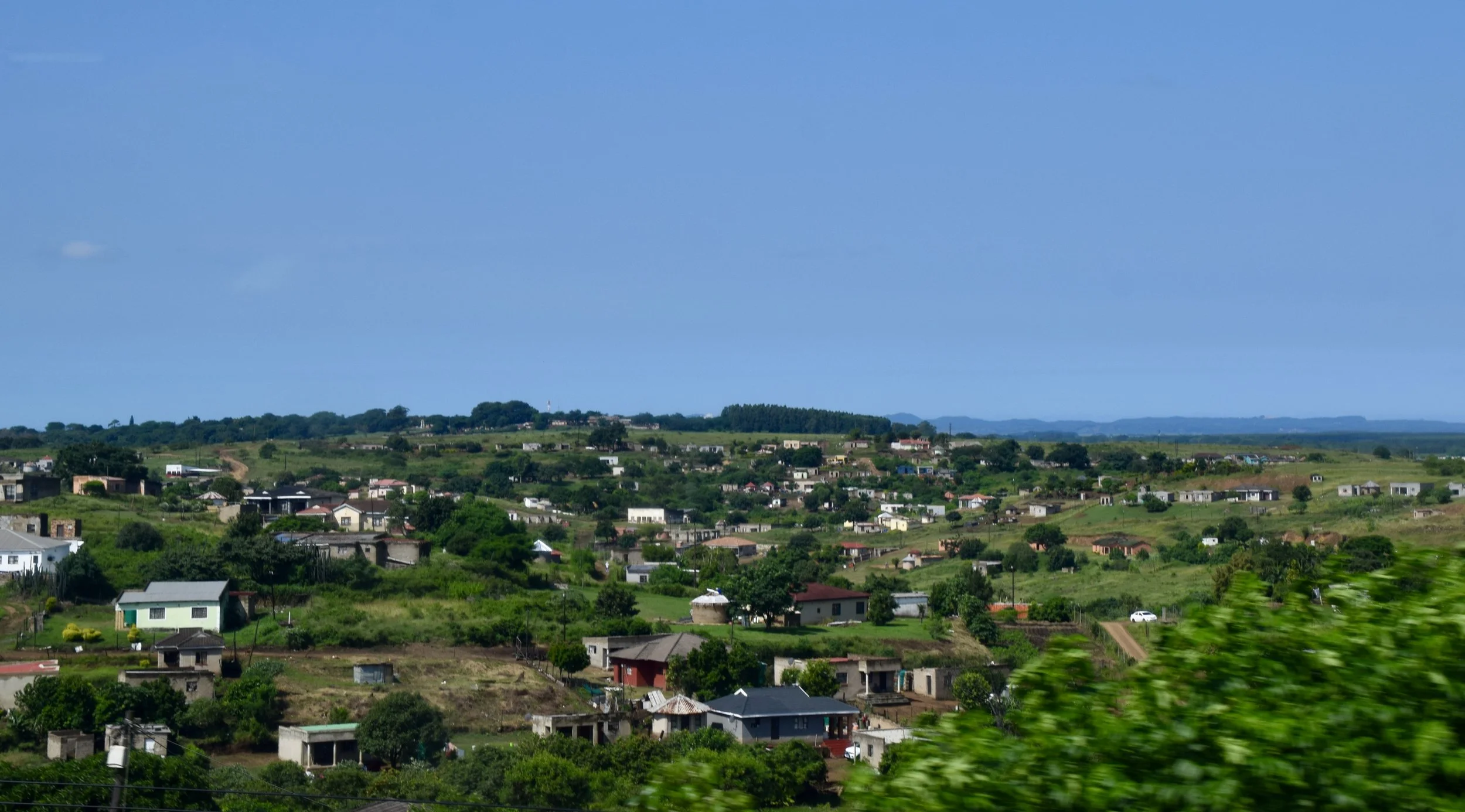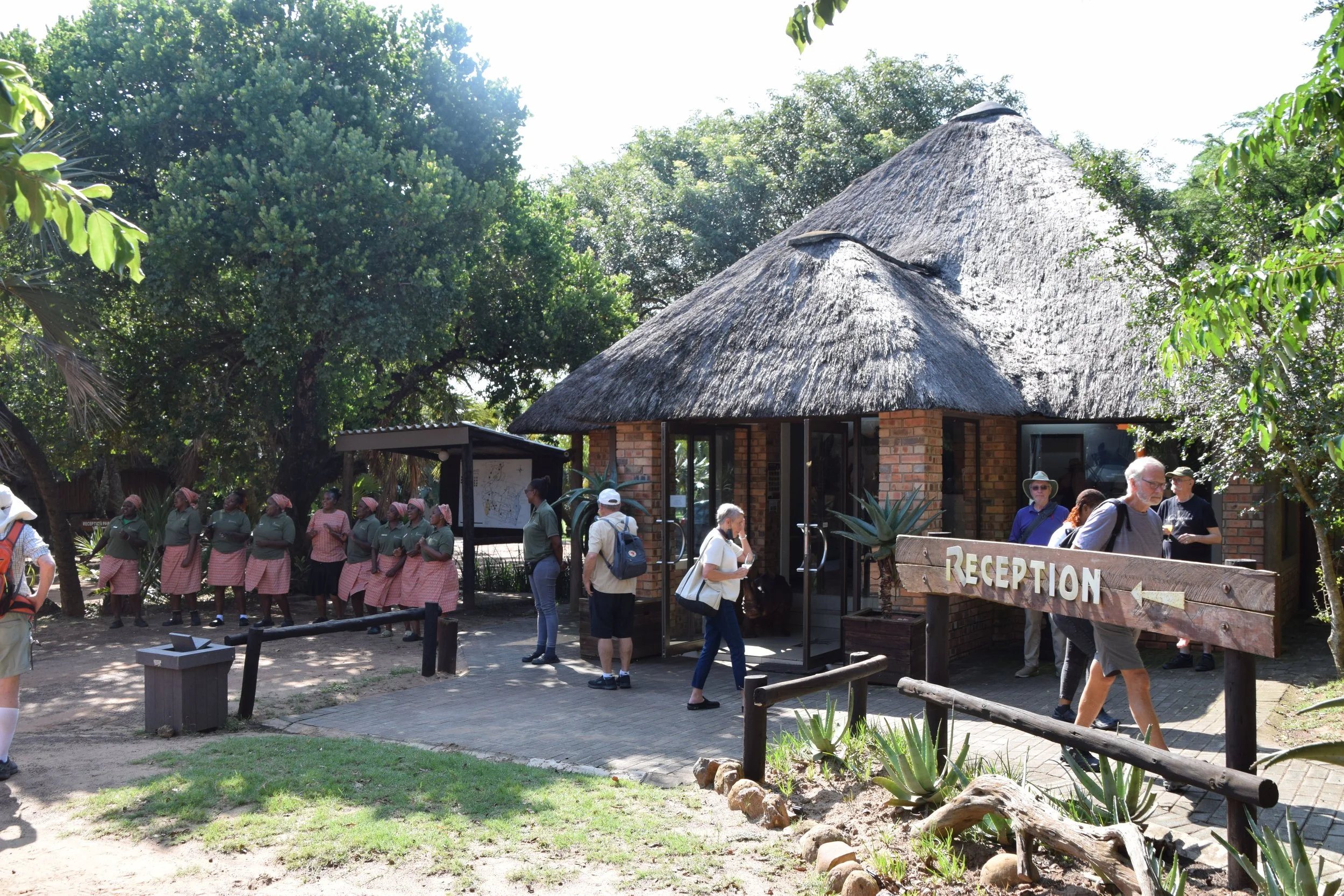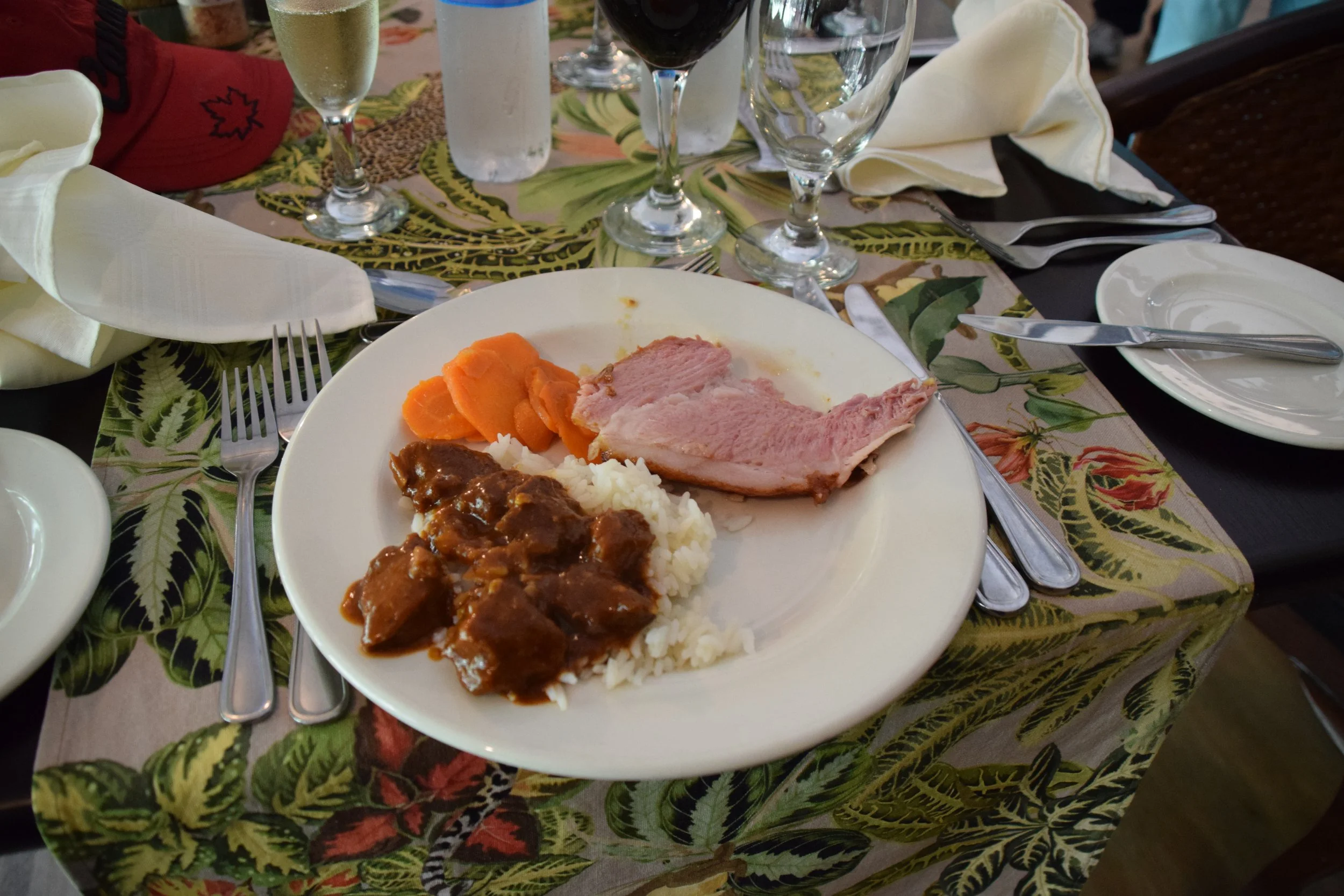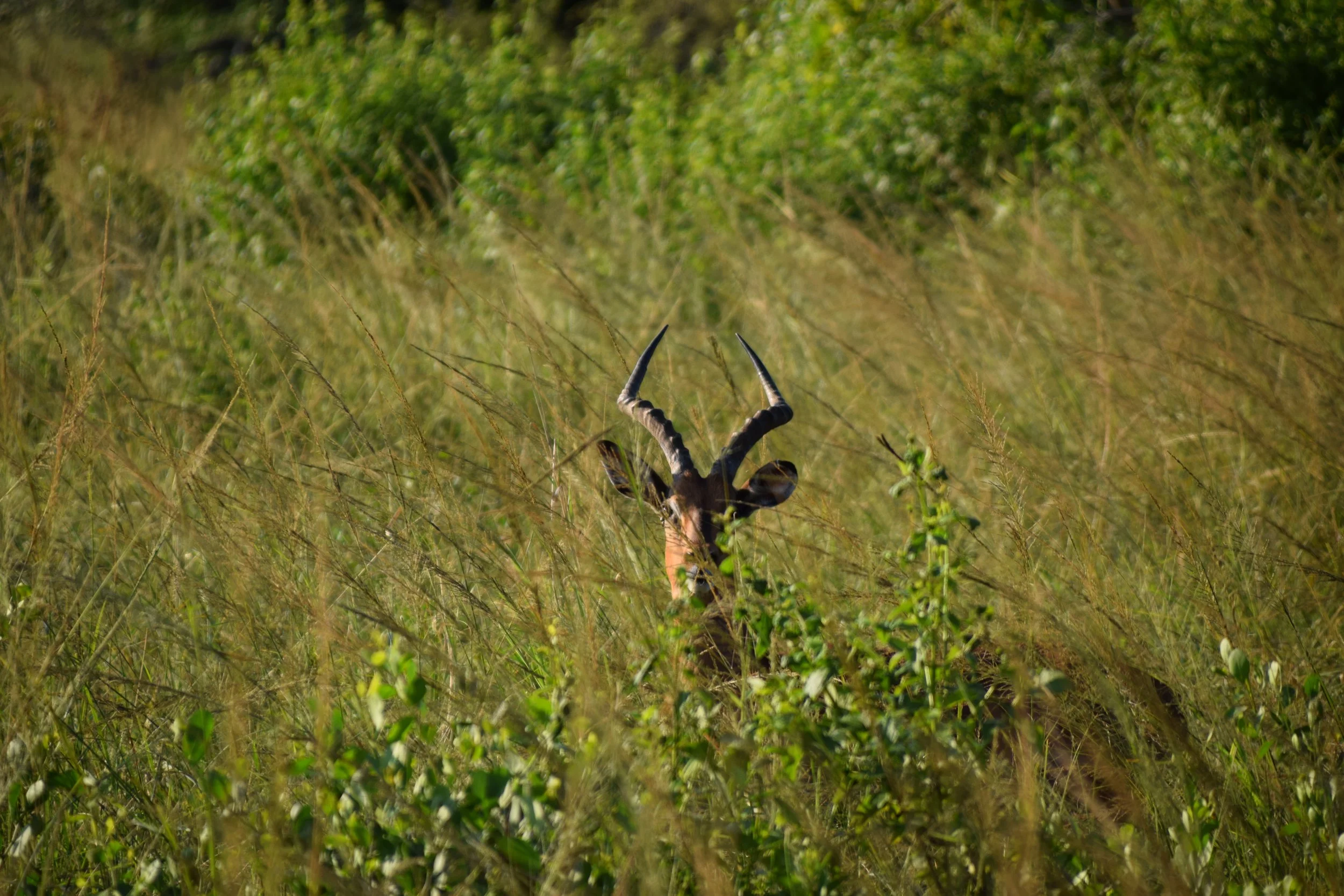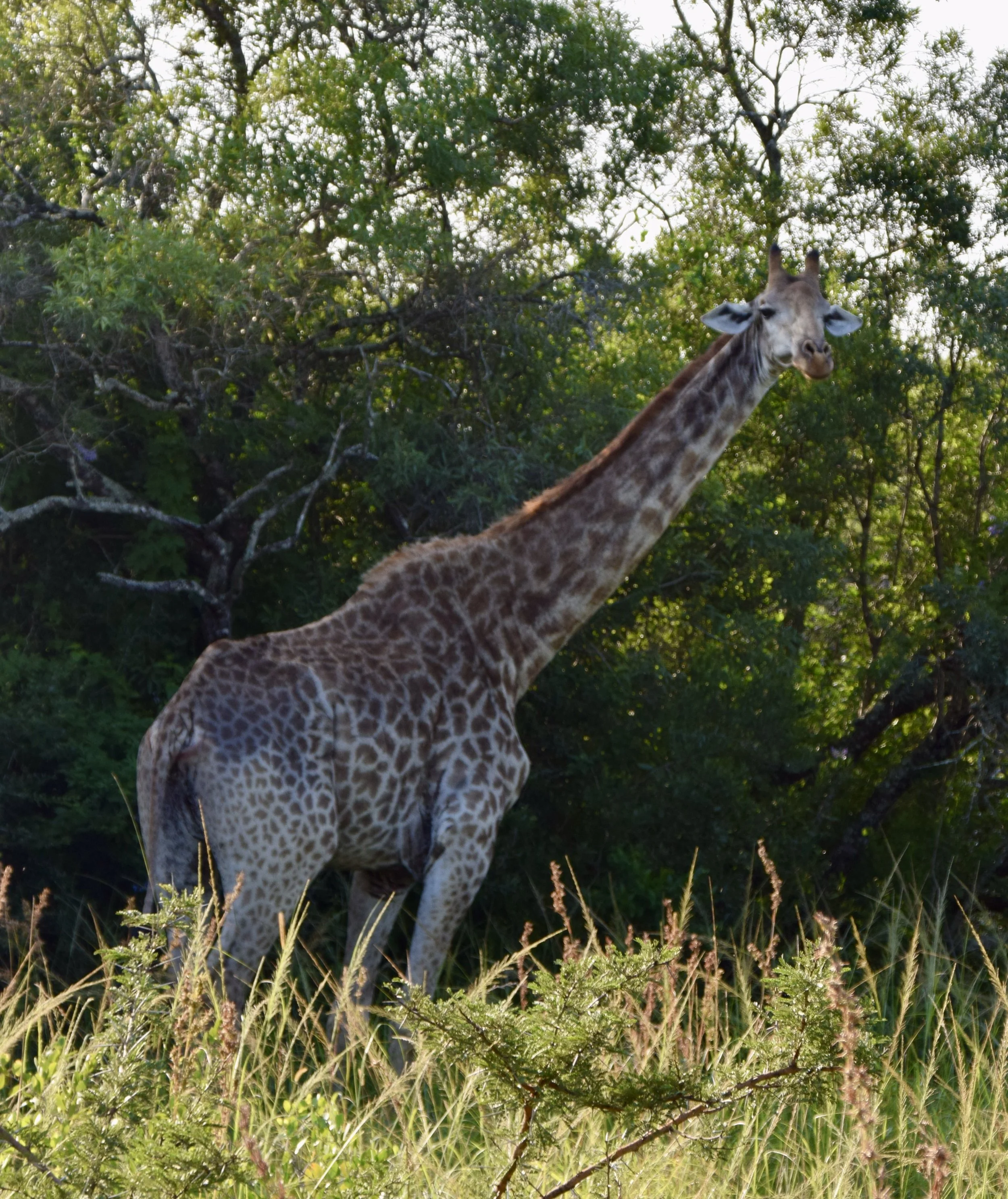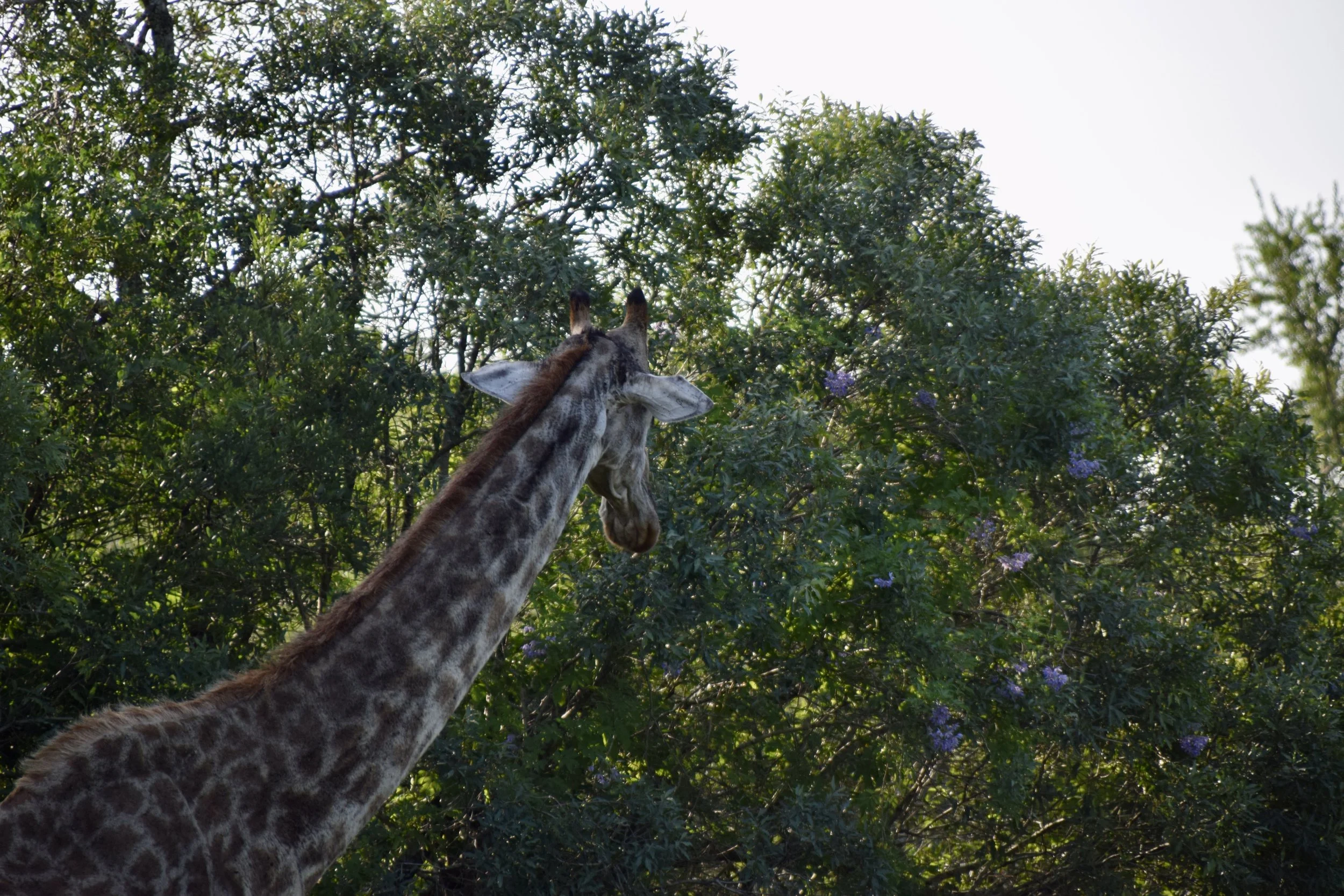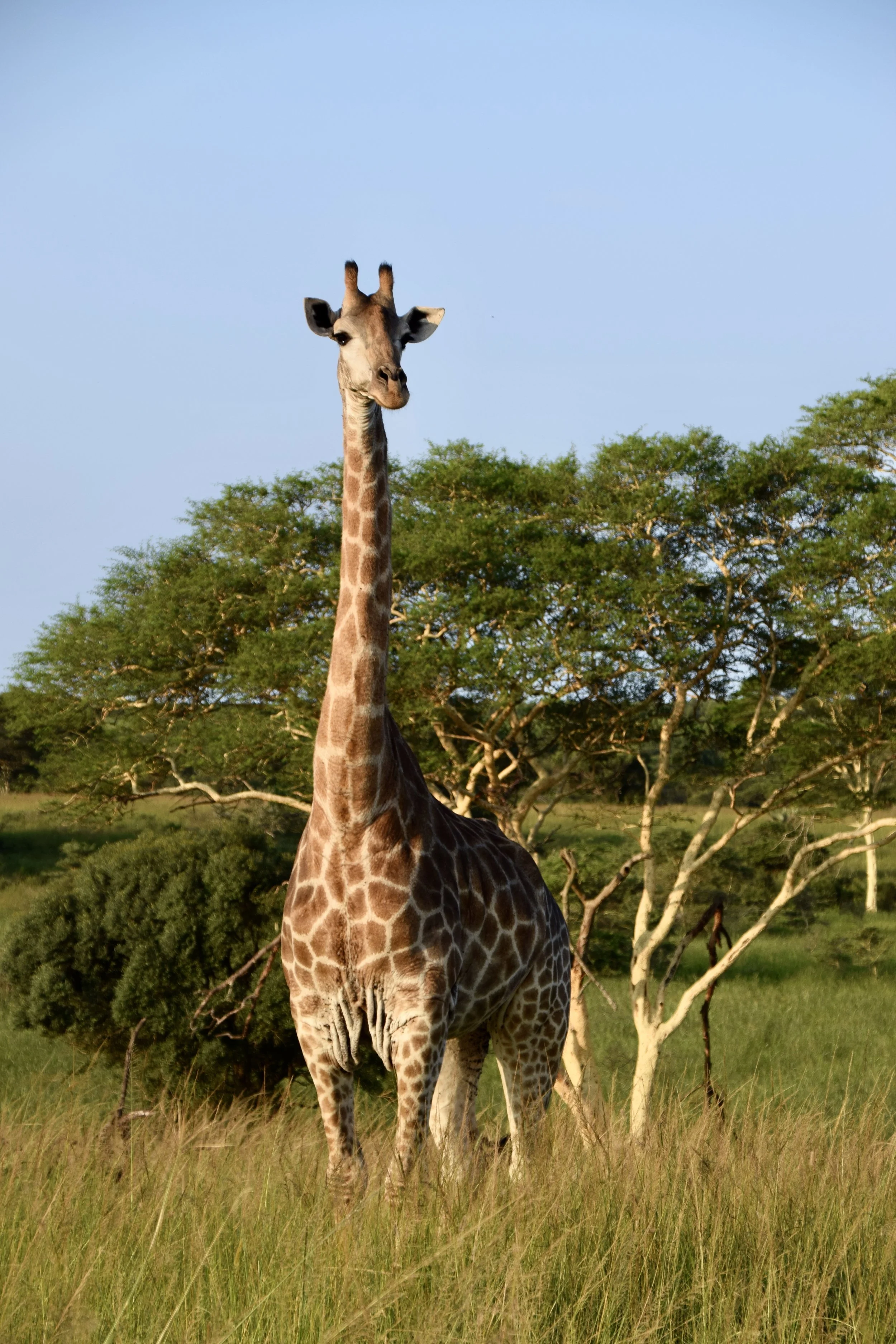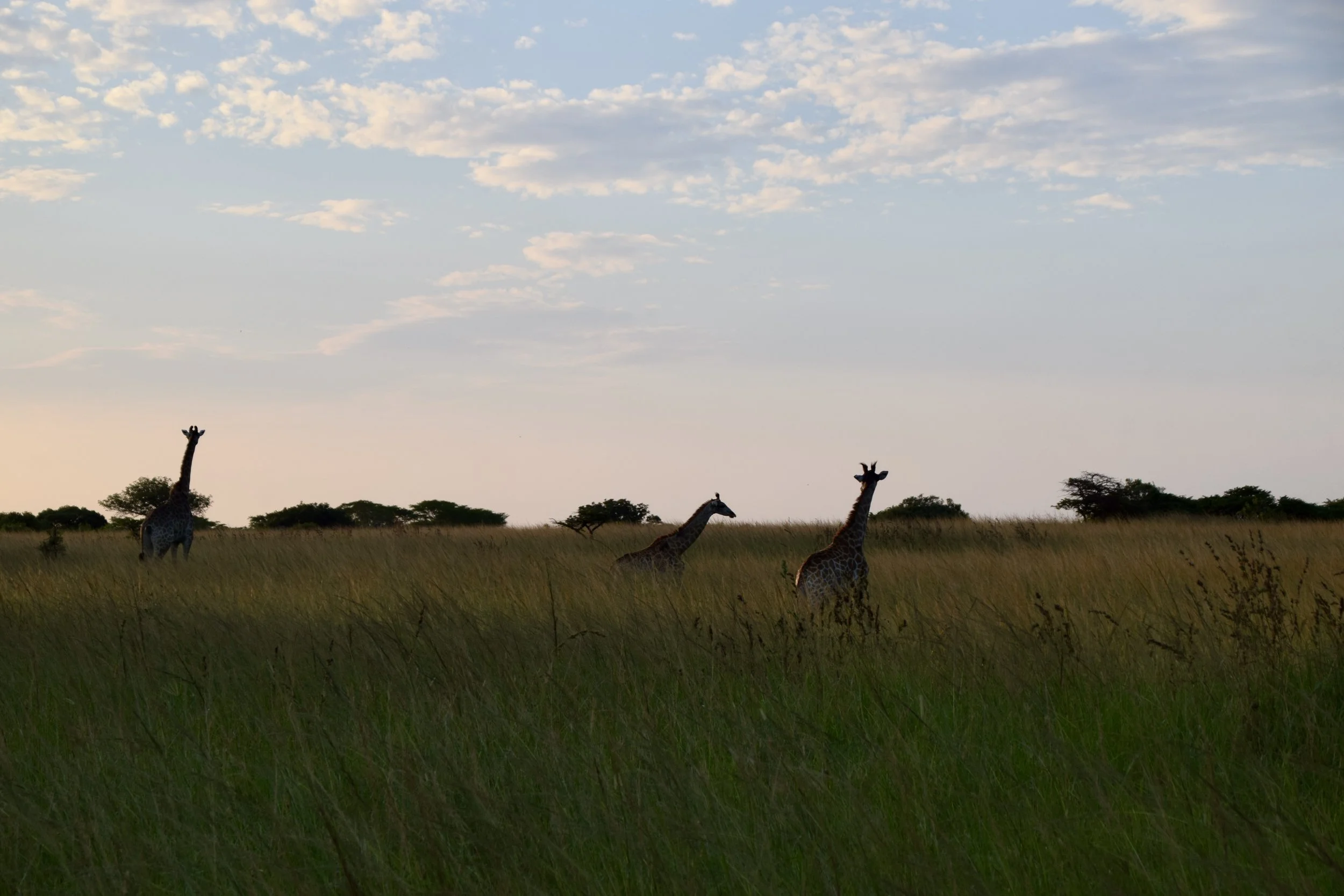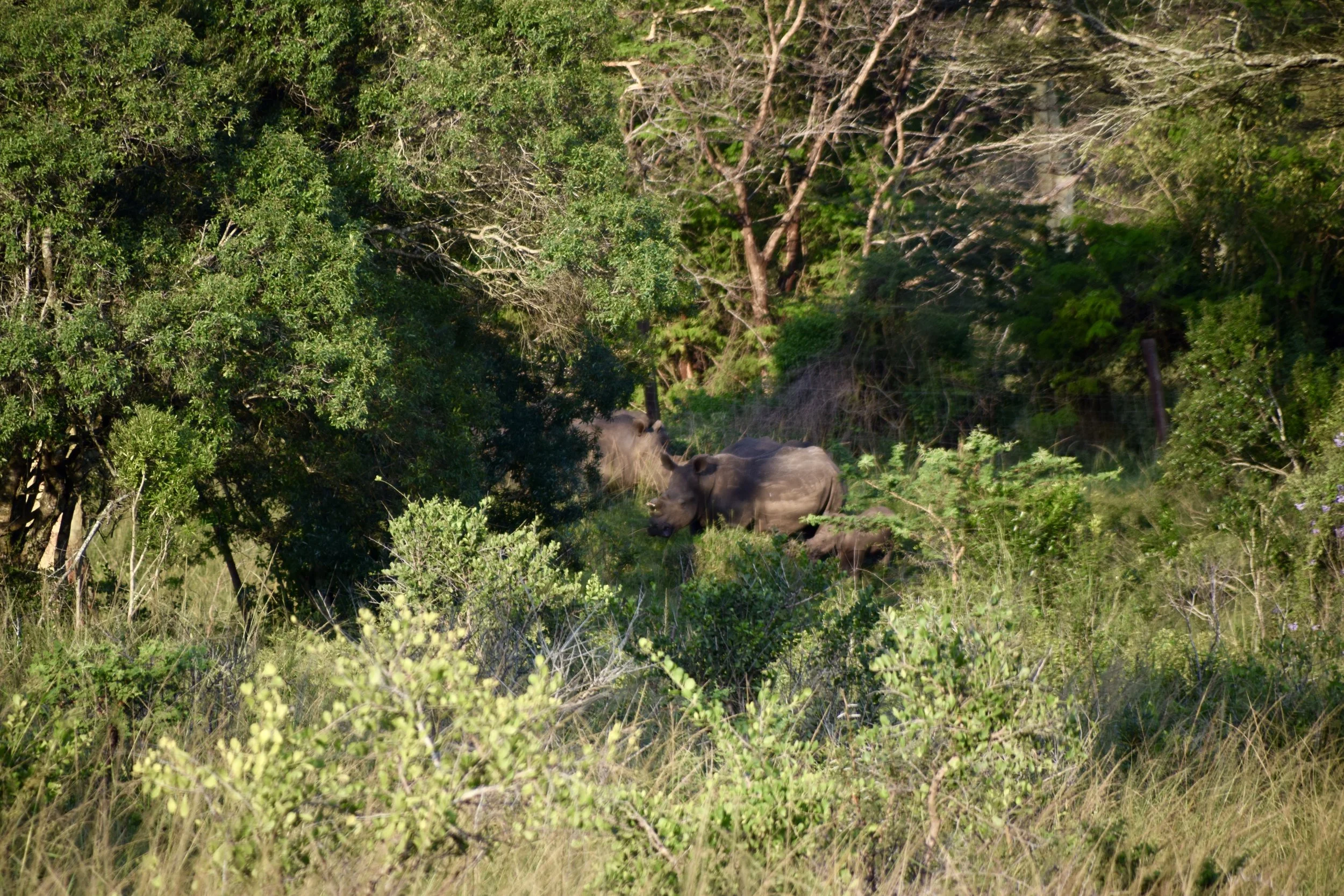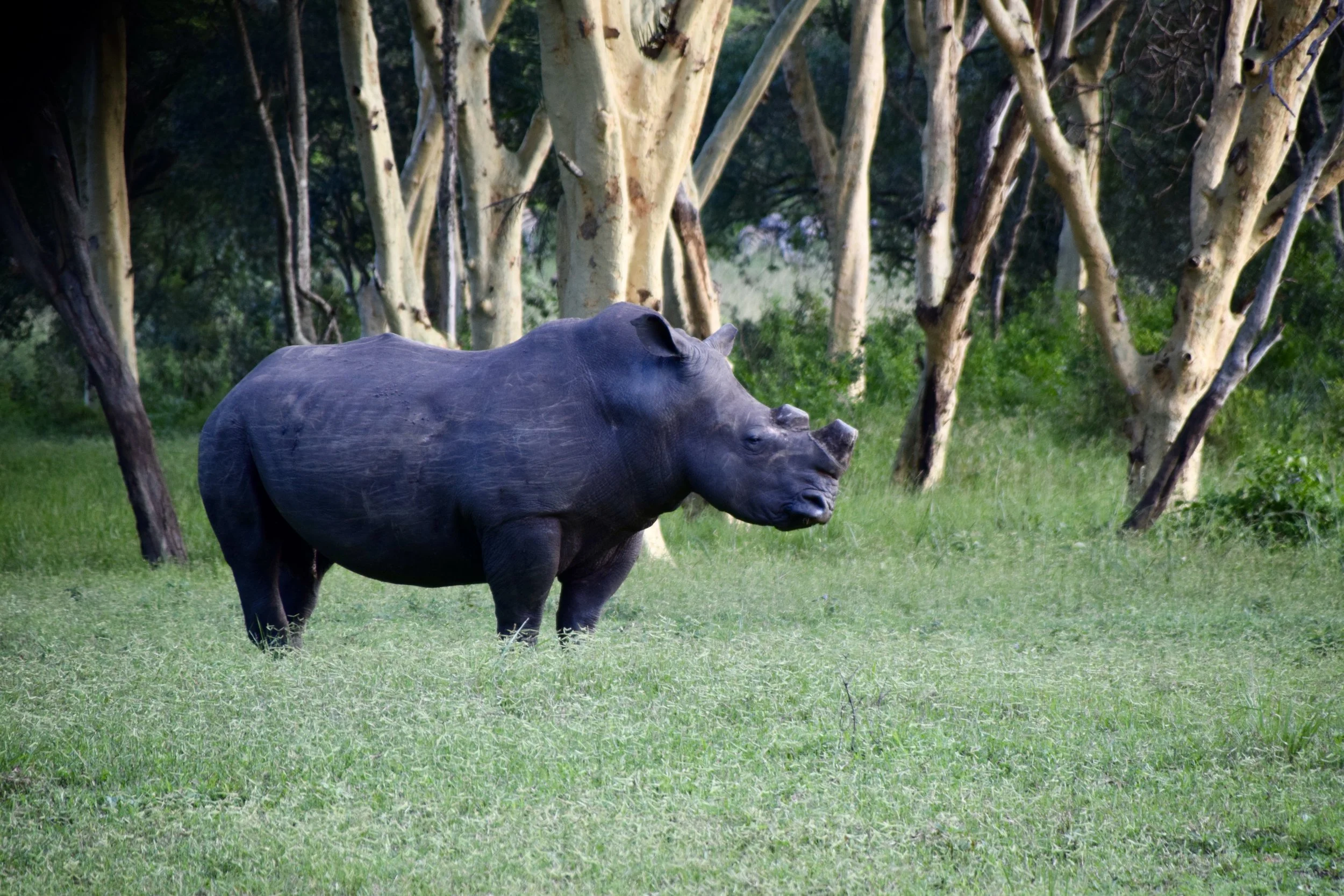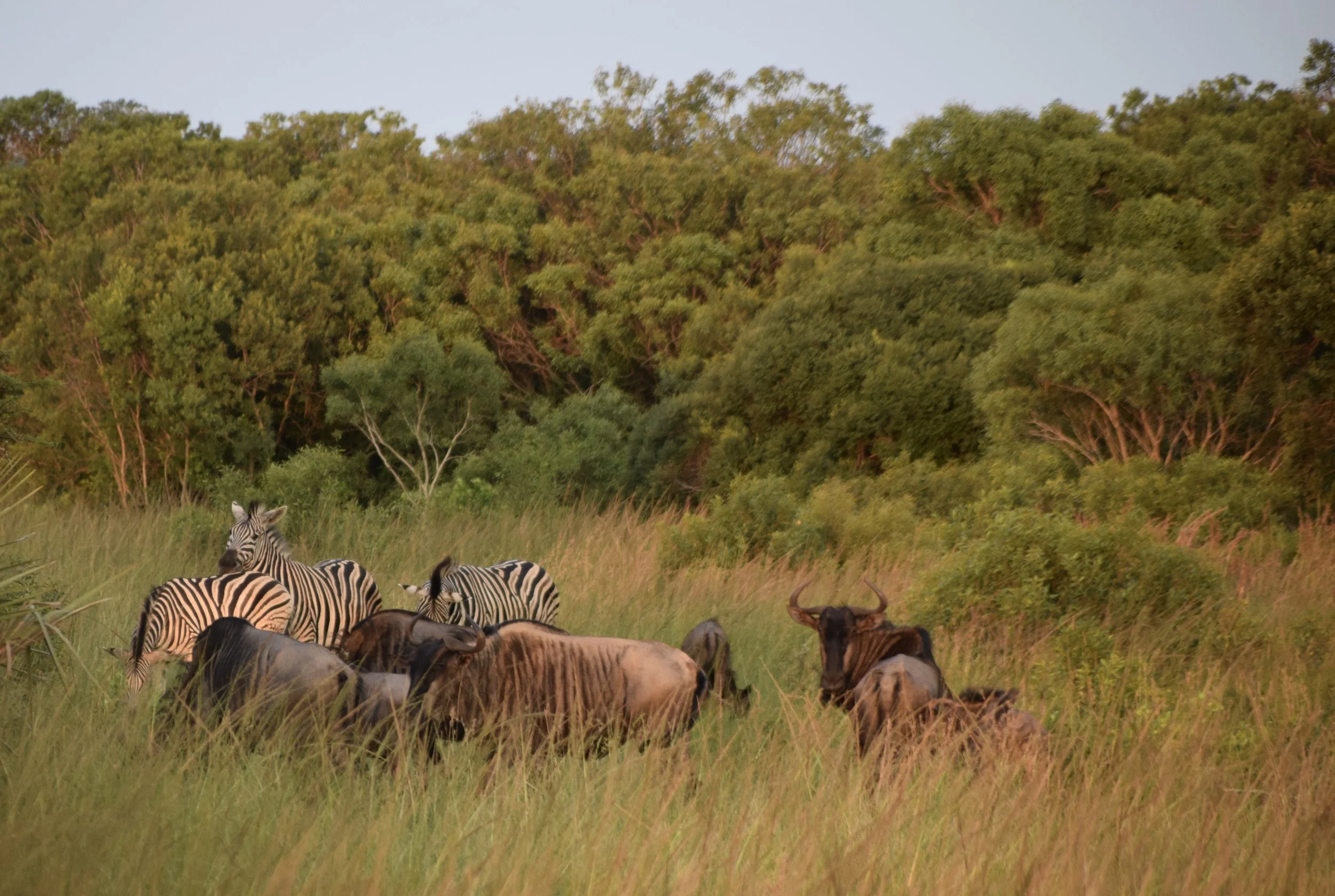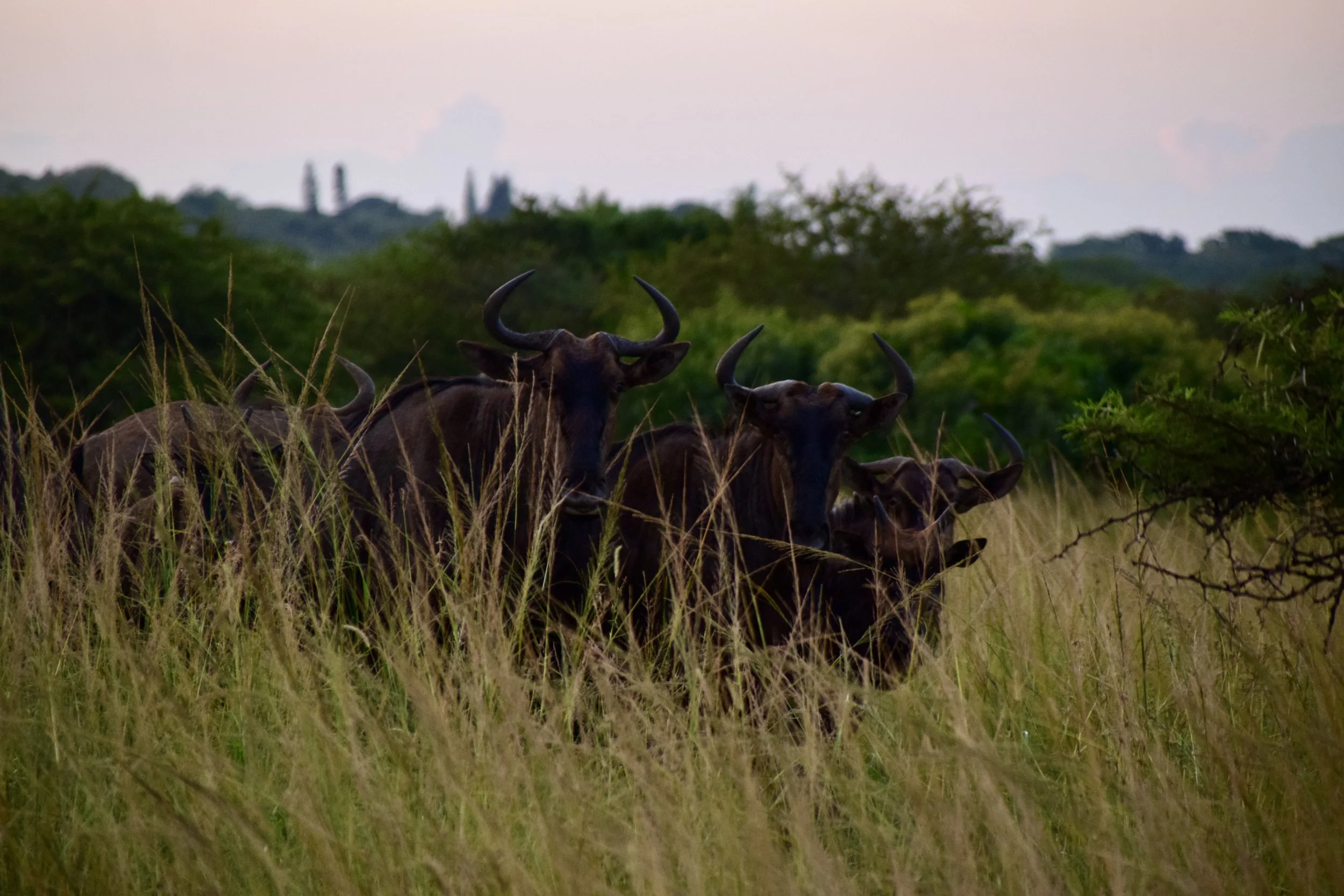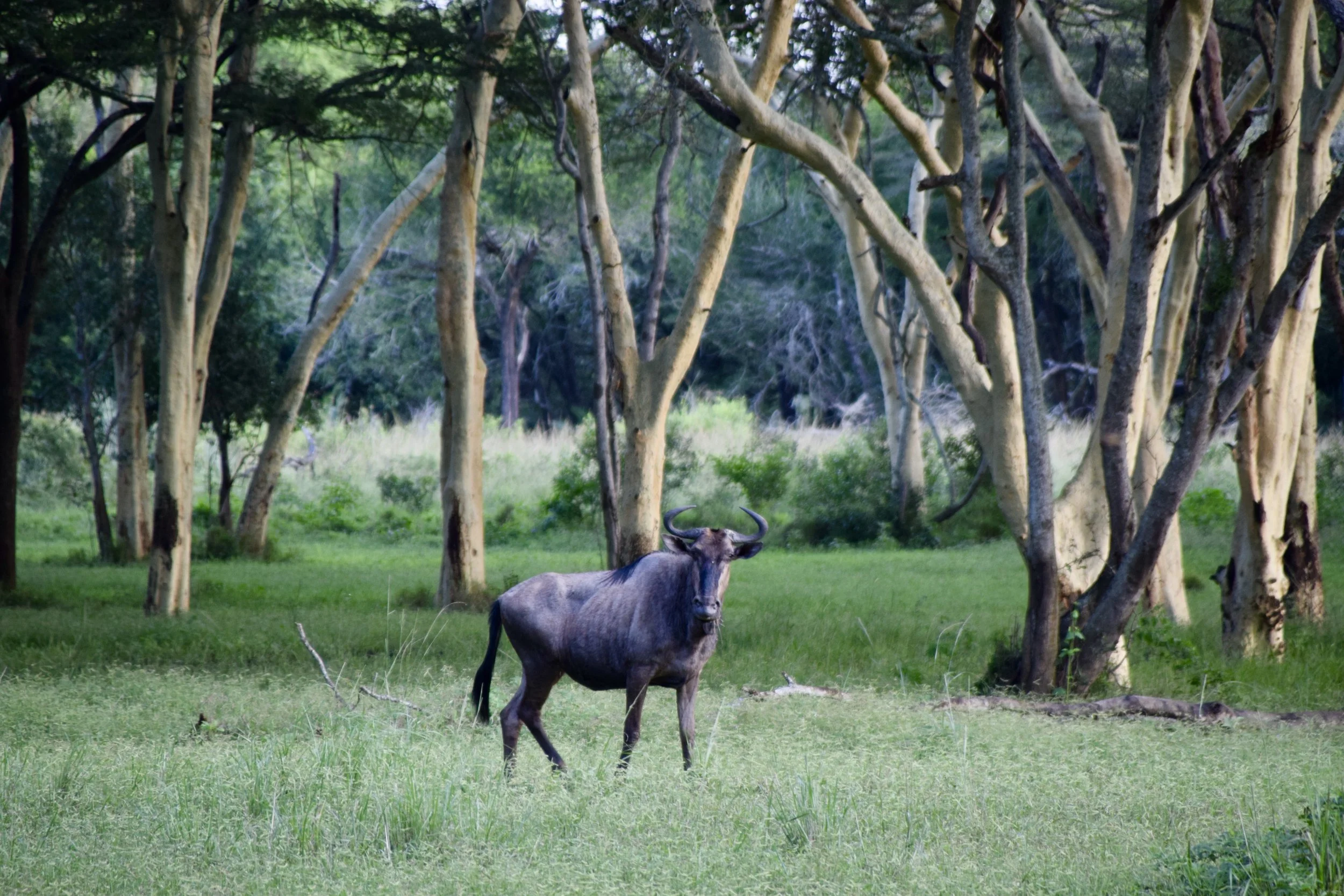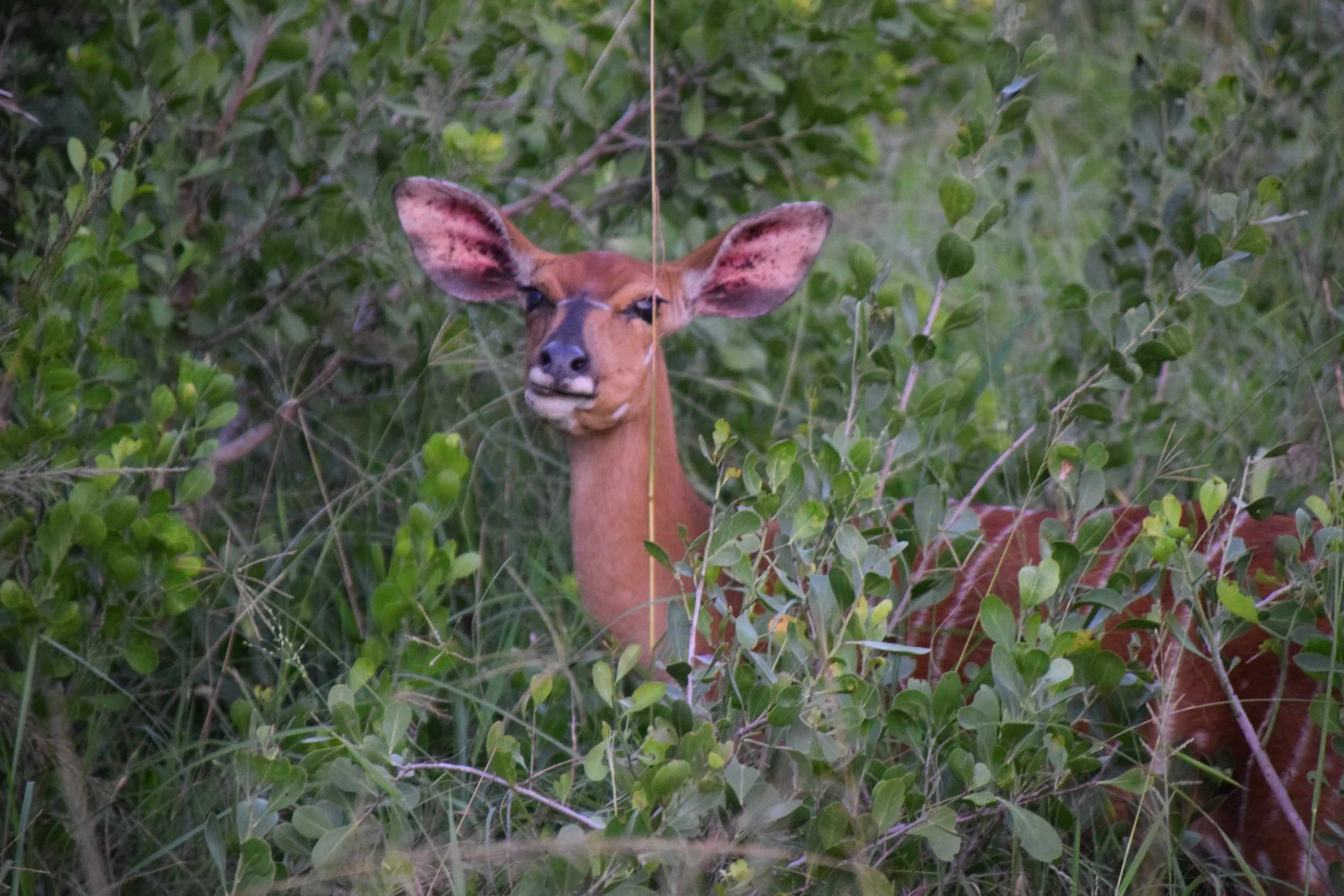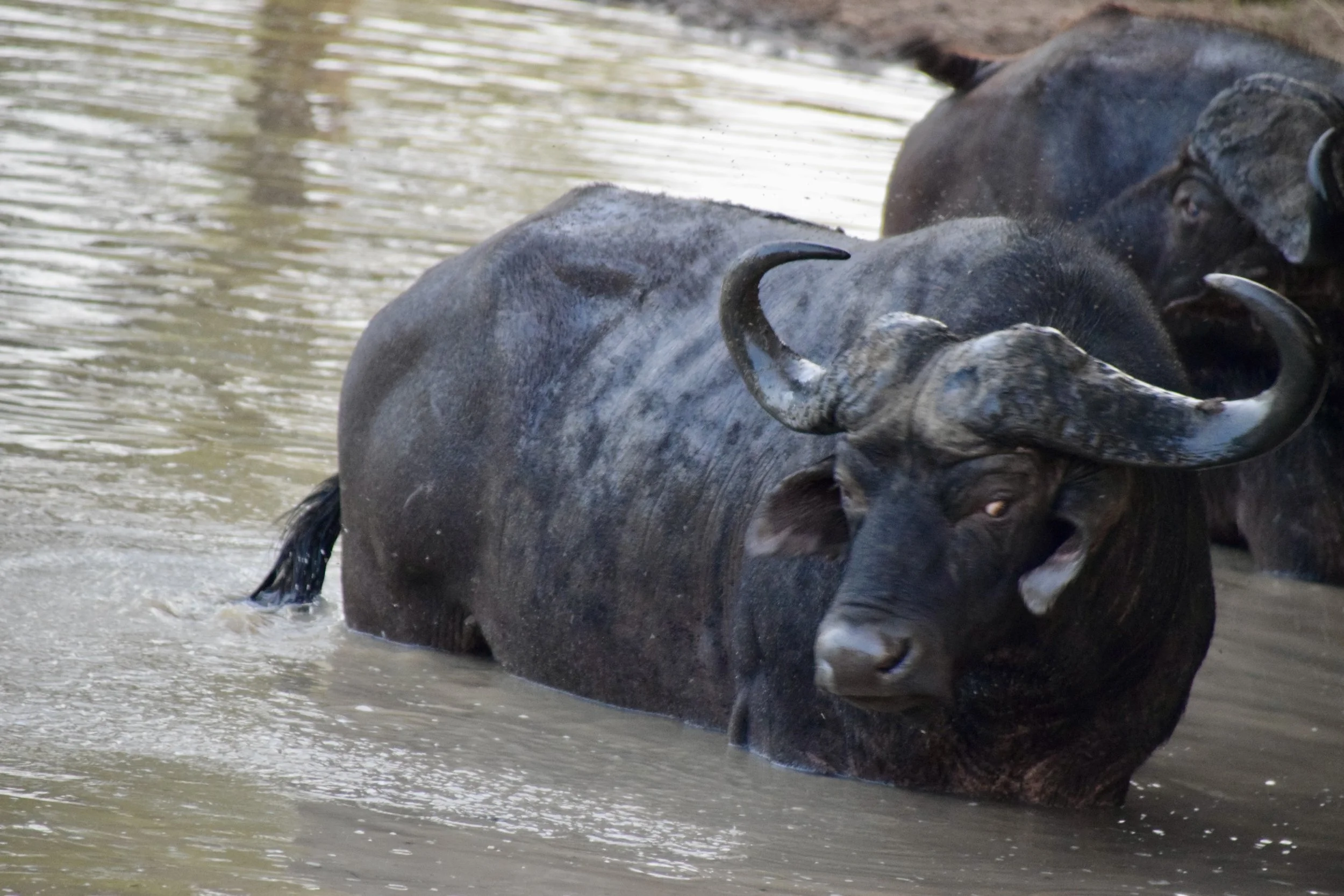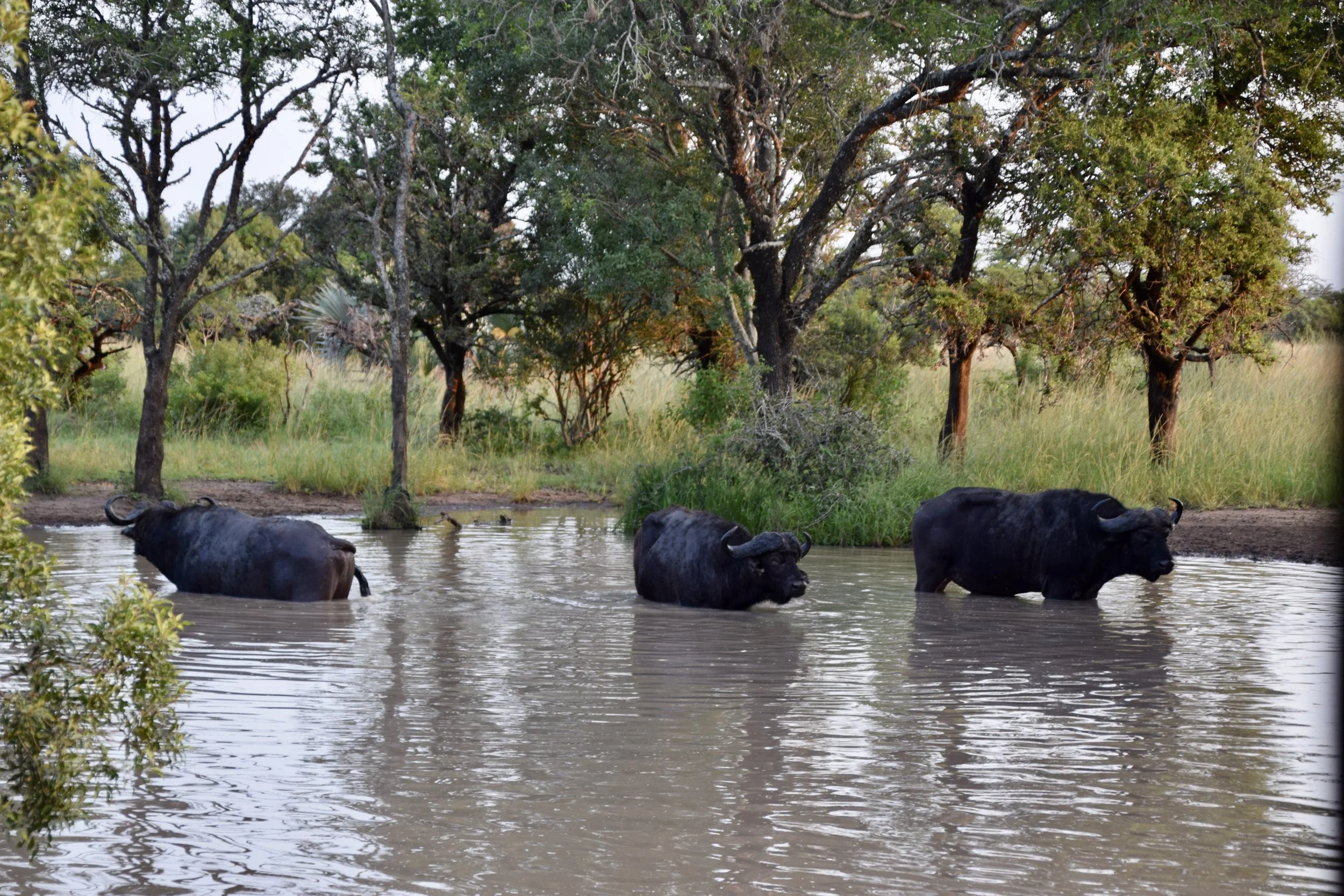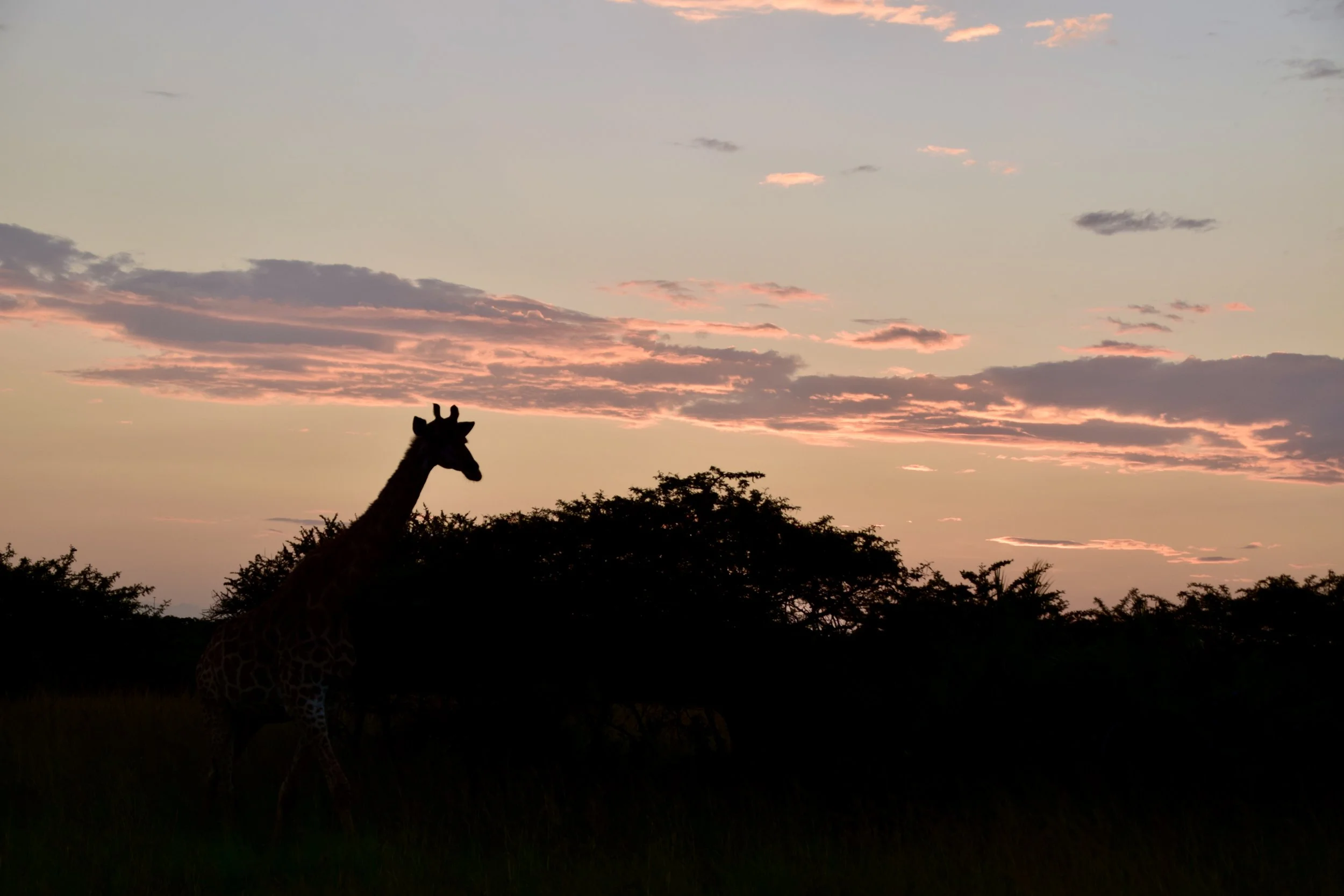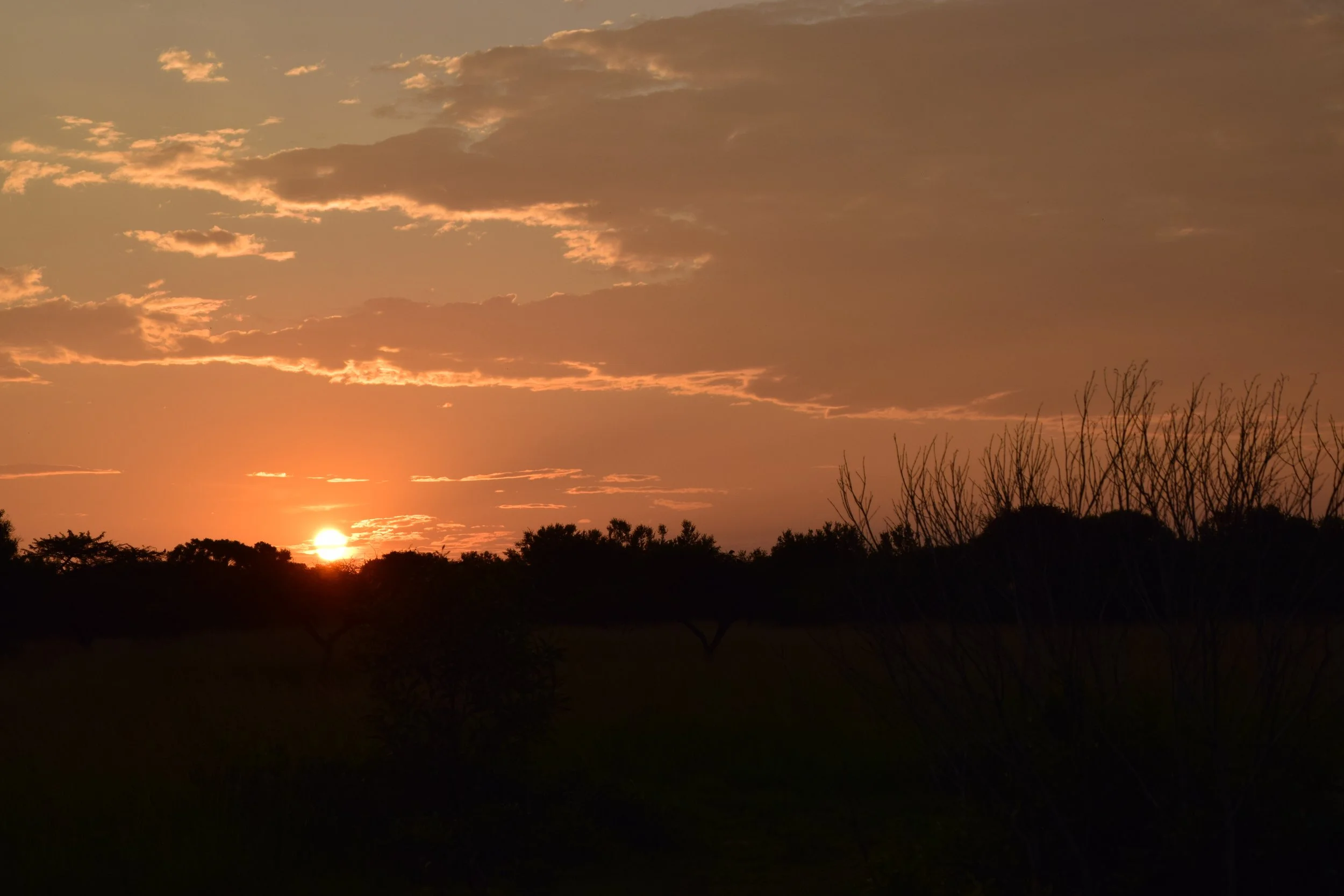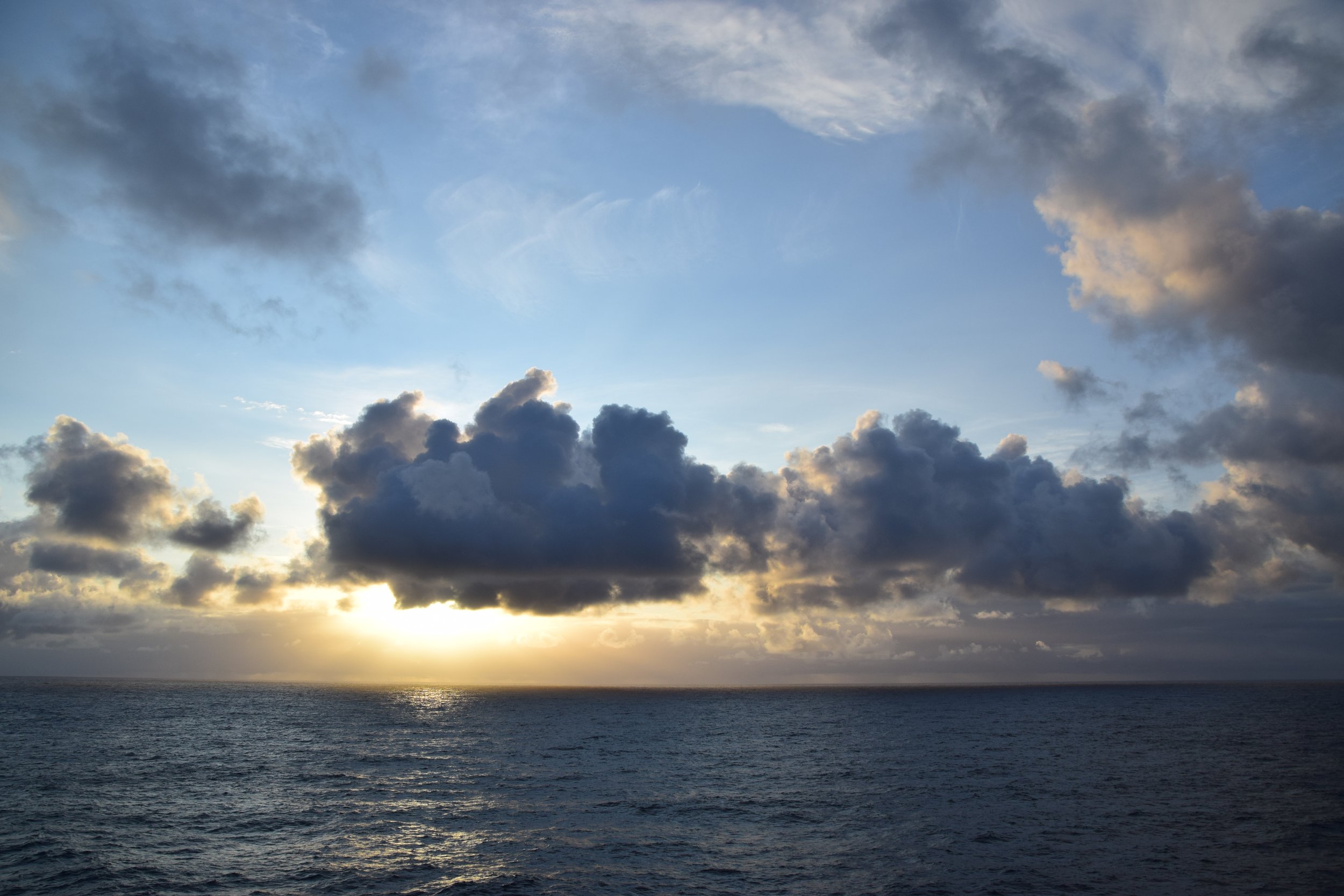
Day 33
Richards Bay
Big day today! Firstly, I’m back in South Africa, a country I fell in love with more than 25 years ago. This is my fourth or fifth trip to the country, but my first time in Richards Bay. The port looked like a port, not much to see aside from cargo ships and lots of coal behind our buses. Coal is a major export here.
The buses were clean, but cramped (5 seats across instead of 4 and knees were pressed into the seat in front) and our guide got on the mic and welcomed us all to South Africa in English and Zulu. Richards Bay is in the province of KwaZulu-Natal and so in addition to English, most locals also speak Zulu. If you’ve heard Zulu spoken before, you might remember that it has clicks in some word pronunciation. There’s also a hissing sound made similar to a cat hissing, which we heard quite a lot when the guide told us about the Hluhluwe river (hiss-u-hiss-u-weh). I’ll say that the bus mic system made it very difficult to understand the guide, plus she had a very heavy accent. After leaving the port, she talked non-stop about things we could easily figure out for ourselves: a gas station, a shopping mall, a car dealership, the suburbs… then as we left town, the massive groves of eucalyptus trees and small townships.
Lots of people gave up, finding it difficult to understand her, and when they could, she was telling them things they already had figured out. Yes, we know a car dealership when we see one, thanks.
But I realized what she was doing, and it was pretty brilliant. By using the first half hour or so of the ride telling us the obvious (and repeating it), it helped us hear the unusual-to-us pronunciations of words. We knew the words already, we’d hear her pronounce them her way twice or more, then we’d start to put the pieces together. By the time she began telling us about the culture of the area, I was pretty tuned in to her dialect. It’s a very male-centric culture, by the way, with women not allowed to do many things, such as entering a small round hut, kneeling, and communicating with the ancestors.
But after about 90 minutes, we arrived at Bonamanzi private game reserve.
I should explain Game Reserves - they aren’t zoos. The animals are not captive, nor penned, but they are cared for by on-site veterinarians when needed. They are focused on conservation rather than human entertainment, so there are no cages. This particular reserve covers 4000 hectares (almost 10,000 acres). When you visit one, you might see animals and you might not. But we’ll get to animals in a minute. We were greeted by some lovely women singing traditional Zulu songs (short clip below)
We were led to a large room with a nice buffet lunch.
We both had ham, which was perfect, and venison curry over rice, which was even better. I should mention that when you hear ‘venison’ here, it means antelope.
I could see some movement out the window and went out with the camera. Found a few nyala (n-yala) antelope hanging out.
After lunch, it was off to the safari wagons for a trip into the bush to see if any animals would be around for us to see. We had a couple things going against us - they had three days of rain before we arrived, so the animals had no need to visit a watering hole to have a drink. Also, the grasses were really tall this time of year, which concealed lots of things.
The rains also made for some interesting road conditions and we were very glad that our vehicle was a 4x4. Nobody wants to get stuck out in the bush with wild animals lurking around.
About 30 minutes into our drive, we’d just about decided that we might not see anything other than antelope. That’s when this lovely lady appeared just off the trail.
It’s one thing to see animals like this in a zoo, but it’s a different feeling entirely to just happen upon one, hanging out and having a bit of tasty tree-lunch.
We ended up seeing quite a few giraffes today, including a couple youngsters.
We saw a group of rhinos off in the distance, with a baby rhino in tow. Very cute.
We got a much better look at a rhino later. The game reserve’s vet removes their horns to discourage poachers. The poachers want the horn and they’ll kill the rhino to get one, so if the horn is removed already, the rhino is safer.
Also saw some wildebeest, zebra, and antelope of various types.
The big one for me, though, were the Cape buffalo, one of the most dangerous animals (to humans). They have a temper and show no warning signs at all before they attack. The pond where they decided to have a bath was next to the jeep track we were driving on and the buffalo were just right there. That’s as close as I ever want to get to one of these without a fence between me and them.
We were soon running out of daylight and needed to head back. I know I love the sunsets over the ocean, but sunsets over the African landscape are almost as nice, especially when a giraffe pokes its nose in.
The bus ride back to the ship seemed to take forever, as we were all tired and there was nothing to see in the dark. We arrived on the ship at 9pm, just as all the restaurants were closing, so we got some room service, had a shower, and set our alarms for tomorrow. Early day coming up - it’s the first time we’ve set an alarm on this trip.
